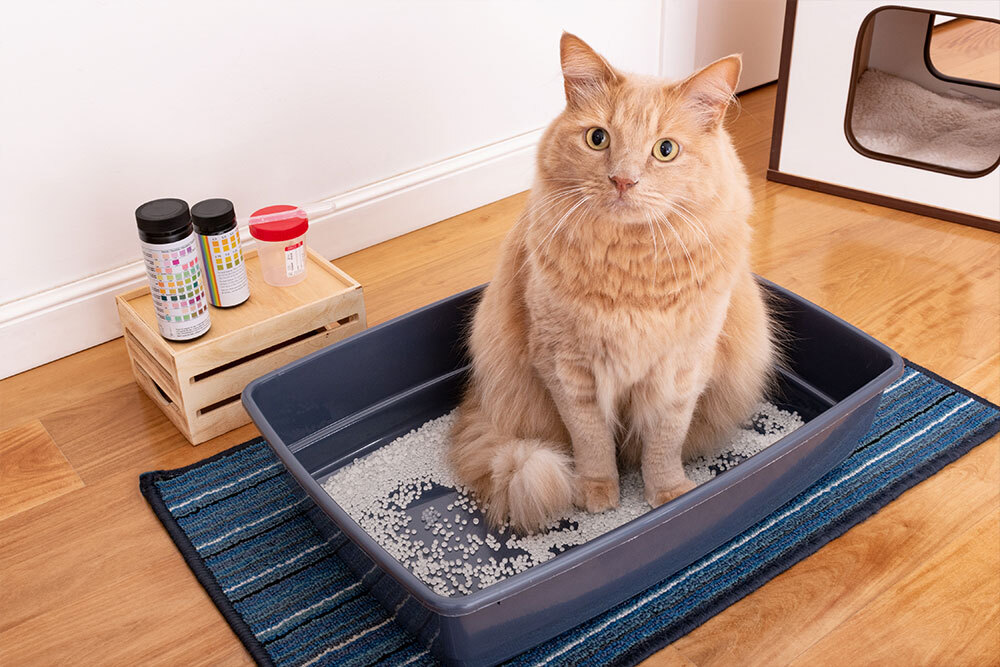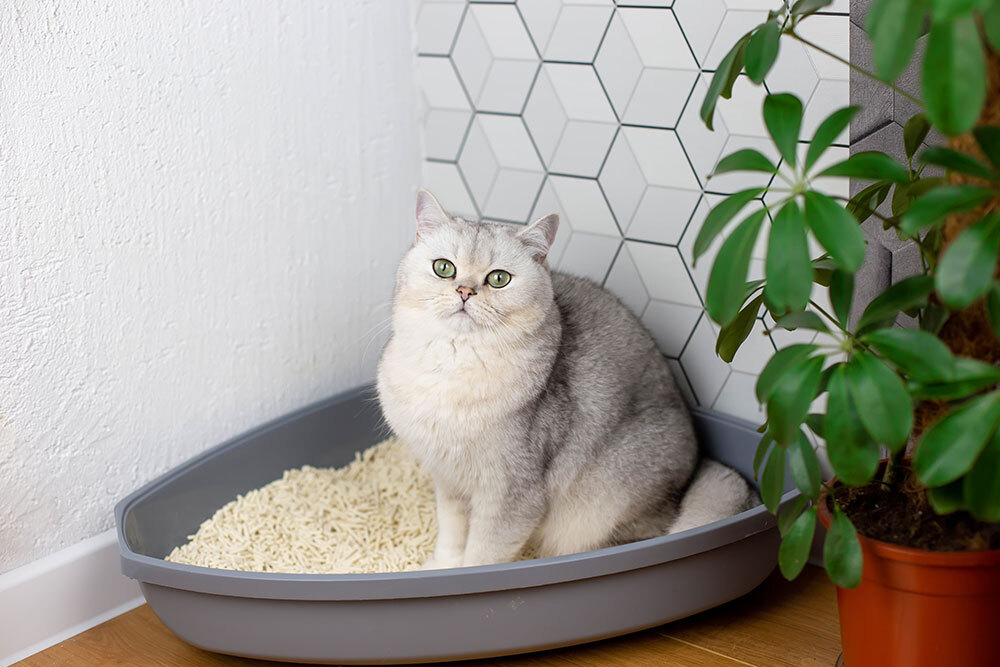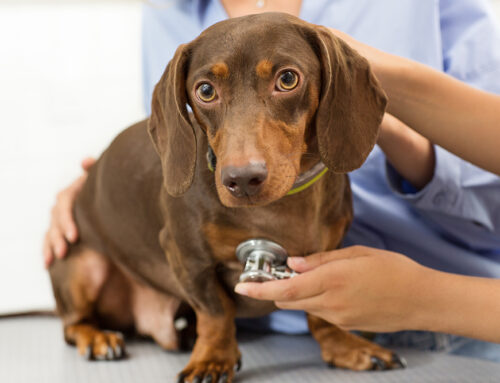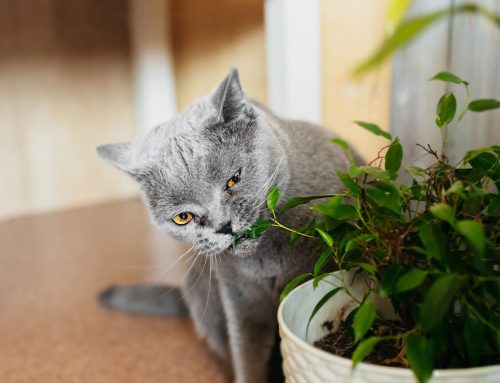Trouble in the Litter Box? What Urinary Blockages Mean for Your Cat
You notice your cat making trip after trip to the litter box, crouching as if to urinate but leaving little behind. At first, you might wonder if it is stress, constipation, or even just a bad mood. Then you see them licking, crying out, or hiding in unusual places, and worry sets in. Is this normal, or is something seriously wrong?
Urinary blockages are one of the most urgent conditions cat owners face. They are painful, often sudden, and can quickly become life-threatening, especially for male cats. What may look like litter box trouble is actually an emergency that requires immediate attention.
At Animal Clinic of Council Bluffs, we understand the fear and uncertainty that comes with seeing your cat in distress. Our team is here to answer your questions, identify what is happening, and provide the treatment needed to relieve the blockage and protect your cat’s health. This guide explains what urinary blockages are, the symptoms you might see at home, why they happen, and how timely veterinary care makes all the difference.
What Is a Feline Urinary Obstruction?
A urinary obstruction occurs when the urethra becomes blocked by crystals, stones, mucus, or inflammatory debris. Male cats are especially vulnerable because their urethra is long and narrow. When urine cannot pass, toxins build up rapidly, leading to severe acid-base imbalances, kidney damage, and potentially fatal complications within 24 to 48 hours.
Common Causes of Urethral Blockage
Crystal Formation and Bladder Stones
When urine is overly concentrated or imbalanced in pH, minerals can crystallize into struvite or calcium oxalate crystals. These crystals may aggregate into stones that lodge in the urethra. Dietary management through prescription urinary diets can help dissolve existing crystals and reduce recurrence.
Feline Idiopathic Cystitis and Mucus Plugs
Inflammation of the bladder lining without an identifiable infectious cause is known as Feline Idiopathic Cystitis. Inflammation stimulates excess mucus production and muscle spasms that can form soft plugs in the urethra. Environmental enrichment and stress reduction strategies are essential for preventing flare-ups.
Bacterial Urinary Tract Infection
Bacterial infections are less common in cats than dogs, but when present they introduce inflammatory debris that can obstruct urine flow. Accurate diagnosis through urine culture and sensitivity testing ensures targeted therapy for urinary tract infections in pets.
Sloughed Cells and Blood Clots
Inflammatory cells, red blood cells, and proteinaceous material may combine into plugs that obstruct the urethra. Gentle bladder flushing following catheterization removes these plugs and restores normal emptying.
Recognizing Early Warning Signs
Early detection of lower urinary tract disease can prevent a complete blockage. Seek veterinary care immediately if your cat shows any of these signs:
- Frequent visits to the litter box with little or no urine output
- Straining and vocalizing while attempting to urinate
- Lethargy, hiding, or reluctance to play or eat
- Vomiting or drooling due to toxin buildup
- A firm, distended abdomen that feels tender
- Signs of pain- check out the Feline Grimace Scale to help you understand your cat’s body language.
Partial obstructions may progress quickly to a full blockage. Do not wait for obvious distress before seeking care. Animal Clinic of Council Bluffs can accept some urgent cases during regular hours- please, call us first so we can prepare or direct you to the best place for your pet. For after-hours emergencies, proceed to the nearest 24-hour emergency hospital.
Diagnostic Approach at Animal Clinic of Council Bluffs
When you arrive at our clinic, the team performs a thorough physical exam and collects vital signs. We use in-house laboratory testing to measure blood urea nitrogen, creatinine, and electrolyte levels to assess kidney function and acid-base status. A urinalysis evaluates pH, crystal type, and signs of infection or inflammation. Digital X-rays identify radiopaque stones, while ultrasound provides detailed imaging of bladder wall thickness and free fluid. These combined findings guide safe catheter placement and fluid therapy planning.
Emergency Treatment Protocol
Intravenous Fluid Therapy
Fluid administration restores hydration, corrects electrolyte imbalances, and supports kidney perfusion.
Pain Management
Analgesics relieve discomfort and reduce urethral spasms to facilitate catheter placement.
Urethral Catheterization and Bladder Flushing
Under sedation, we gently pass a sterile catheter to relieve the obstruction. Once urine flows, we flush the bladder with sterile solution to remove residual debris.
Monitoring and Supportive Care
After catheterization, cats remain in our dedicated care ward for close monitoring. We continue fluids until bloodwork returns to normal and urine output is steady. If a bacterial infection is present, we prescribe antibiotics based on culture results.
Surgical Options for Recurrent Obstructions
For cats experiencing repeated blockages despite medical management, or for those who cannot have their blockage relieved by a catheter, a perineal urethrostomy may be the best solution. This procedure creates a wider urinary opening to reduce the risk of future obstruction. Our veterinarians will explain the benefits, risks, and recovery expectations in detail.
Preventive Strategies for Long-Term Health
Encourage Adequate Hydration
Increasing water intake helps dilute urine and minimize crystal formation. Offer wet food, multiple water bowls, and consider a pet fountain for constantly circulating water.
Specialized Diet for Urinary Support
Prescription diets formulated to maintain optimal urine pH and crystal-dissolving properties play a critical role in prevention. Ask our team which formula suits your cat’s needs.
Stress Reduction and Home Environment
Stress triggers lower urinary tract disease. Provide hiding spots, perches, and interactive toys. Maintain consistent routines, and use synthetic pheromone products to create a calm atmosphere.Resources such as the Indoor Pet Initiative can guide you in building a cat-friendly home environment that supports both mental and urinary health.
Litter Box Habits Matter
Cats need clean, accessible litter boxes to stay healthy, and poor setup often contributes to urinary issues. Boxes should be large, low-entry, and placed in quiet, convenient areas, with multiple options in multi-cat households. The cat litter box guide explains how location, type of litter, and cleanliness can reduce stress and encourage regular use.
Regular Wellness Exams
Biannual wellness visits enable early detection of crystal formation or subtle kidney changes. During these visits, we perform comprehensive exams, blood panels, and urinalysis to monitor urinary health.
Next Steps for Concerned Cat Owners
Seeing your cat strain or cry in the litter box is frightening, and it is natural to feel uncertain about what to do next. Please know that you do not have to navigate this alone. If your cat is showing any signs of urinary distress, call us right away at (712) 323-0598 so we can provide immediate help. For ongoing care, you can also schedule a wellness exam online to discuss prevention and long-term urinary health. At Animal Clinic of Council Bluffs, our team is here to ease your worries and give your cat the comfort and care they deserve.







Leave A Comment